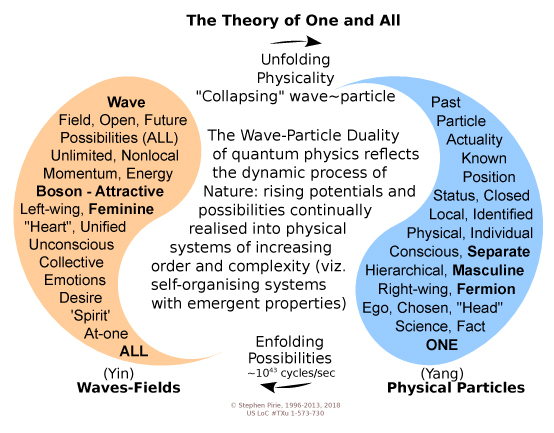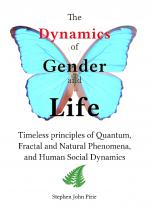From an interview by Kerry O'Brien (ABC TV's 7.30 Report with Dr Norman Doidge).
From the interview:
for the longest time, for 400 years, we thought of the brain as like a complex machine with parts. And our best and brightest neuroscientists really believed that. It was a mechanistic model of the brain and machines do many glorious things, but they don't rewire themselves and they don't grow new parts. And it turns out that that metaphor was actually just spectacularly wrong, and that the brain is not inanimate, it's animate and it's growing, it's more plant like than machine like and it actually works by changing its structure and function as it goes along.
In a broader context, Visa International founder, Dee Hock voiced a similar perspective a few years ago ...
[from this FastCompany.com article ]
We are at that very point in time when a 400-year-old age is dying and another is struggling to be born -- a shifting of culture, science, society, and institutions enormously greater than the world has ever experienced. Ahead, the possibility of the regeneration of individuality, liberty, community, and ethics such as the world has never known, and a harmony with nature, with one another, and with the divine intelligence such as the world has never dreamed."
The last 400 years roughly marks the adolescence of mankind, in that from around 1600AD we’ve surged ahead with a 'masculine' focus on technology, science, machinery, objectivity and the competitive conquest of entire nations and cultures.
This era was one in which entire physical systems – comprising chemicals, plants, brains and bodies – were believed to be complex structures or machines that operated via strict mechanical laws.
With the discovery of quantum physics however, we now know the material that comprise our brains, bodies and genes are far more plastic and maleable than previously understood.
As widely reported in recent media, researchers at the Harvard Medical School have found that focused concentration through meditation can "switch on" disease-fighting genes in our bodies.1
"The experiment, which showed just how responsive genes are to behaviour, mood and environment, revealed that genes can switch on, just as easily as they switch off."2
This research follows earlier studies that also confirm "your genes are not your destiny."3
As Dr Dean Ornish explains,
"In most cases, our genes are only a predisposition; they are not written in stone. And if we have a strong family history for diseases such as prostate cancer, breast cancer, or heart disease – "bad genes" – then we may need to make bigger changes in lifestyle in order to help prevent or even reverse chronic diseases."4
Switching on beneficial genes echoes the deeper "switching" or "physioplasticity" that occurs on a fundamental physical level (see Figure: "Key Principle of Life" below).
According to some estimates, our physical system is rapidly and repeatedly 'switching on and off' or ‘regenerating’ somewhere around 19 billion trillion trillion (1033) Gigahertz.
In effect, the particles that comprise our brains are "switching on and off" at a rate well beyond the reach of scientific measuring instruments. Our brains, bodies and the entire physical system is, in deeper terms, 'plastic', existing in fluid superpositions that habitually 'collapse' via pathways honed after mllions of years of self-organisation, into the everyday stable, 'concrete' reality we know and experience. However, as Princeton's PEAR laboratory revealed and confirmed throughout nearly 30 years of research and experimentation, this deeper physioplasticity is able to be shaped and directed (albeit on a small scale at this point in our evolution) through intent, desire, focus and belief.
"The physical world that you recognize is made up of invisible patterns. These patterns are "plastic," in that while they exist, their final form is a matter of probabilities directed by consciousness."5
Within this broader context, the field of neuroplasticity will incrementally expand to encompass other hitherto “incurable” conditions of the body, based on the fundamental 'physioplasticity' of the cells, genes, organs and bones within our bodies; and of the physioplasticity of physical matter, and material objects.
Research and experimentation by physicists "Towards Quantum Superposition of Living Organisms" opens the door to recognising our choices, beliefs and expectations help form and 'collapse' fields of possibility into 'concrete' reality.
Updates
Research confirms we're evolving faster than can be explained by natural selection.
As this article confirms
“Most of the mutations that we found arose in the last 200 generations or so. There hasn’t been much time for random change or deterministic change through natural selection,” said geneticist Joshua Akey of the University of Washington, co-author of the Nov. 28 Nature study. “We have a repository of all this new variation for humanity to use as a substrate. In a way, we’re more evolvable now than at any time in our history.”

- 1. See "Genomic Counter-Stress Changes Induced by the Relaxation Response" by Dr Jeffery A. Dusek, Dr Herbert Benson, Harvard Medical School, Benson-Henry Institute for Mind Body Medicine, et al.
- 2. "Relax your way to perfect health," The Independent
- 3. Dean Ornish M.D., "Changing Your Lifestyle Can Change Your Genes", Newsweek, July 17, 2008
- 4. Dean Ornish M.D., "Changing Your Lifestyle Can Change Your Genes", Newsweek, July 17, 2008
- 5. Jane Roberts, The Individual and the Nature of Mass Events.
 "The Dynamics of Gender and Life" ebook is now available at
"The Dynamics of Gender and Life" ebook is now available at